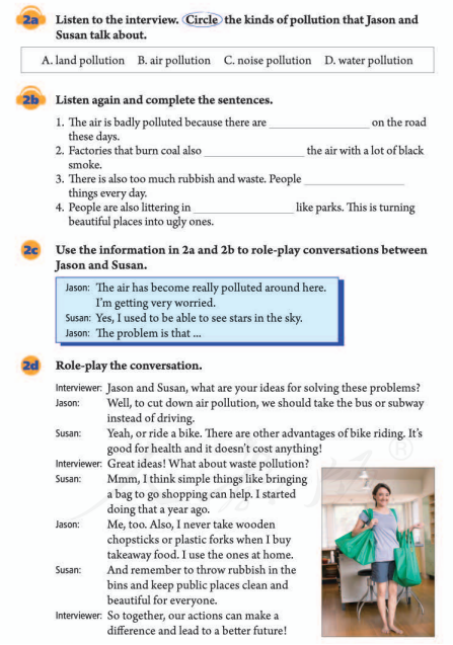
距离2022年上半年教师资格面试
【考试咨询】浙江教师交流群:287234887 |微信公众号:浙江教师考试网
|微信公众号:浙江教师考试网
浙江教师招考公告|浙江教师历年真题|32学院免费课程|面授班级
初中英语《Unit 13 We’re trying to save the earth》教学设计
根据人民教育出版社《义务教育教科书英语》九年级全一册We’re trying to save the earth! Section A 2a-2d 部分,按要求进行相应的教学设计。

【参考设计】
Teaching aims
Knowledge aims:
Students can get more familiar with the topic of pollution and accumulate expressions related to the topic.
Ability aims:
Students will master some listening strategies like catching key words and predicting based on the text content.
Emotional aims:
Students’ sense of protecting environment can be nurtured through learning this course, and they can properly do what they can do to protect the environment in their daily life.
Key points
Students can get more familiar with the topic of pollution and accumulate expressions related to the topic.
Difficult points
Students can cultivate the awareness of protecting environment and apply it to real life.
Teaching procedures
Step 1: Warming up:
The teacher plays a music video called The Earth Song of Michael Jackson, and asks students to watch it and answer the following questions: What does the video show? What does the song want to express? Invite a student to answer these questions. Then lead in today’s topic — We’re Trying to Save The Earth!
Justifications: Video is a good way to create an active English learning atmosphere in the class. Besides, as the video is related to today’s topic, the teacher can lead in new lesson directly.
Step 2: Pre-listening:
Activity 1: Hunt the words
The teacher divides the students into four groups. Each group chooses a topic from 2a. According to the topic, each student must say the words or phrases related to the words spoken by the previous student, and see which group can say the most relevant words in the specified time. For example: land pollution→rubbish→dirty→throw→dustbin→clean up ...
After the vocabulary relay, students are given one minute to review the words or phrases listed by their group.
Activity 2: Prediction
Ask students to observe the sentences in activity 2b first and make a prediction on the contents to be filled in. For example, “The air is badly polluted because there are ________ on the road these days.”, which can be inferred from the whole sentence that a noun should be filled in the horizontal line.
Justification: This activity can not only fully mobilize students’ awareness of active participation, but also effectively focus students’ attention, arouse students’ knowledge reserve related to topics in their minds, and prepare them well for listening. Pre-listening prediction can help students capture key words more effectively while listening to the tape.
Step 3: While-listening:
Teacher will play the tape for the first time and let students finish activity 2a and check answers together.
Listen to the tape for the second time. Students complete activity 2b independently. Then check each others’ answers and spellings with their desk mate. The teacher announces the answers and the class checks their own answers.
For the third listening, students should listen to the tape and follow the dialogue. Remind the students to imitate the pronunciation and intonation.
Justifications: Through three times of listening, students can master the main content of listening materials and some listening strategies.